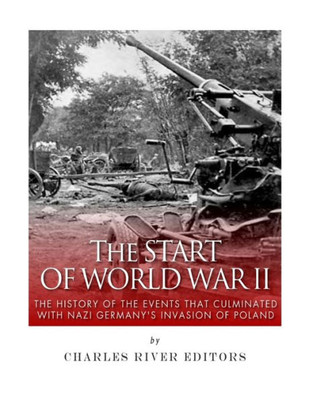*Includes pictures *Includes accounts of the fighting by soldiers on both sides *Includes online resources and a bibliography for further reading All Americans are familiar with the "day that will live in infamy." At 9:30 a.m. on Sunday, December 7, 1941, Pearl Harbor, the advanced base of the United States Navy's Pacific Fleet, was ablaze. It had been smashed by aircraft launched by the carriers of the Imperial Japanese Navy. All eight battleships had been sunk or badly damaged, 350 aircraft had been knocked out, and over 2,000 Americans lay dead. Indelible images of the USS Arizona exploding and the USS Oklahoma capsizing and floating upside down have been ingrained in the American conscience ever since. In less than an hour and a half the Japanese had almost wiped out America's entire naval presence in the Pacific. Pearl Harbor was unquestionably one of the seminal events in American history, and given the nature of the surprise attack, the entry of the U.S. into the war, and the lingering controversies and conspiracy theories, the attack on Pearl Harbor continues to be a highly charged and heavily debated event. Those who had decoded and seen the Japanese communications in early December 1941 would not be surprised when they heard about an attack on December 7, 1941. They would, however, be astonished when they heard where that attack took place. Posted on the other side of the world, it was early on the morning of December 8 in the Philippines when American general Douglas MacArthur received news of the Japanese attack on Pearl Harbor hours earlier. With that, it could only be a matter of time before the Japanese attacked the Philippines. Although MacArthur and Allied forces tried to hold out, they could only fight a delaying action, and the Japanese managed to subdue all resistance by the spring of 1942. However, in the aftermath of Japan's successful invasion, as the nation's military strategists began preparations for the next phase of military actions in the theater, their forces had to deal with a critical logistical problem they had not foreseen. The Japanese had to deal with large numbers of Filipino and American soldiers who had surrendered after a lengthy defense in the Bataan peninsula, but they were not prepared for so many prisoners of war because their own military philosophy emphasized rigid discipline and fighting until the end. They could not imagine a situation in which Japanese soldiers would willingly surrender, so they assumed that no other combatants would do so either. At Adelaide on March 18, 1942, MacArthur met the assembled press and told them, "I came through and I shall return." The words would go down in history, and MacArthur would eventually fulfill the vow. The Americans would turn the war in the Pacific around in the middle of 1942, but in the wake of Pearl Harbor and the Japanese invasion of the Philippines, the country was in desperate need of a morale boost, and it would come in the form of the Doolittle Raid. In part to show that the Japanese were not invincible, and in part to reassure the American public that the nation would not lose the war, the Doolittle Raid included both Army and Navy units that launched 16 land-based medium bombers from an aircraft carrier, a feat that was the first of its kind but also one involving a great deal of risk. Getting the bombers and carriers in place to execute the mission involved much strategic planning and cooperation within the American military, and had it failed, it could have dealt a serious blow to the Americans' Pacific presence due to the nation's limited resources in that theater. As if getting in position wasn't challenging enough, the raid was never designed to include a round trip back to the carrier. Given the size of the bombers, the planes were unable to land back on the USS Hornet, so the plan was to have them fly over Japan and ditch in China after bombing Tokyo.
- | Author: Charles River Charles River Editors
- | Publisher: Createspace Independent Publishing Platform
- | Publication Date: Dec 19, 2017
- | Number of Pages: 286 pages
- | Language: English
- | Binding: Paperback
- | ISBN-10: 1981857265
- | ISBN-13: 9781981857265






